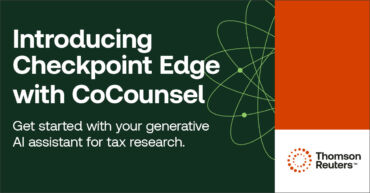Starting with their tax years that begin in 2021 (the 2021 tax year) pass-through entities with items of international tax relevance must contend with a number of new forms and instructions. Specifically,
- Schedules K-2 and K-3 for Form 1065, Partners’ Distributive Share Items—International,
- Schedules K-2 and K-3 for Form 1120-S, Shareholders’ Pro Rata Share Items—International; and
- Schedules K-2 and K-3 for Form 8865, Partners’ Distributive Share Items—International.
Who is required to file Schedules K-2 and K-3?
Schedule K-2 is an entity-level form while Schedule K-3 is used to report each partner’s or shareholder’s share of the items on Schedule K-2 and thus copies of the Schedule K-3 must be provided to partners and shareholders.
The Schedules apply to domestic partnerships and S corporations that are directly or indirectly engaged in foreign activities and U.S. persons required to file Form 8865 by reason of ownership of a controlled foreign partnership, transfers to foreign partnerships, or acquisitions, dispositions, or changes in foreign partnership interests.
Checkpoint’s Federal Tax Coordinator includes detailed guidance on the information that must be provided to partners on Form 1065 and Schedules K-1, K-2, and K-3 (¶S-2707) and on furnishing an S corporation’s return information to shareholders (¶S-1906).
A significant impetus for the new schedules is thought to be the changes in the Code’s international tax rules arising as part of the 2017 Tax Cuts and Jobs Act. These new provisions include (i) the global intangible low-taxed income (GILTI), (ii) the base erosion and anti-abuse tax, and (iii) the foreign derived intangible income (FDII) regimes. In addition, the new schedules and related instructions bring needed clarification and standardization to an area that had been susceptible to inconsistent and inadequate reporting.
What K-2 and K-3 Relief Is Available for 2021?
Although providing some additional certainty, the new schedules have created substantial compliance burdens for entities required to comply with new reporting requirements, in particular those with substantial international activities. Acknowledging these additional burdens, in Notice 2021-39, the IRS issued transition relief for tax years that begin in 2021 for Schedules K-2 and K-3 for Forms 1065, 1120-S, and 8865.
Under the transition relief, a partnership required to file Form 1065, an S corporation required to file Form 1120-S, or a U.S. partner required to file Form 8865 (a filer) will not be subject to the relevant penalties (under Code Secs. 6698, 6699, 6721, 6722, and 6038(b) and (c)) for any incorrect or incomplete reporting on Schedules K-2 and K-3 if the filer establishes to the IRS’ satisfaction that it made a good faith effort to comply with the Schedules K-2 and K-3 filing requirements (and the Schedule K-3 furnishing requirements). A filer that does not establish that it made a good faith effort to comply with the new requirements will not be eligible for relief.
For purposes of determining whether a filer makes a good faith effort to complete Schedules K-2 and K-3, the IRS will take into account the extent to which the K-2/K-3 filer has made changes to its systems, processes, and procedures for collecting and processing information relevant to filing the Schedules K-2 and K-3 and the extent to which the filer has obtained information from partners, shareholders, or the controlled foreign partnership (CFP), or applied reasonable assumptions when information is not obtained. The IRS will also take into account the steps taken by the filer to modify the partnership or S corporation agreement or other governing instrument to facilitate the sharing of information with partners and shareholders that is relevant to determining whether and how to file Schedules K-2 and K-3.
In some cases, certain information about partners, shareholders, or the CFP is relevant in determining the applicability of Schedules K-2 and K-3. For example, if a partnership has a direct or indirect partner that is a nonresident alien individual or a foreign corporation, the partnership must complete Form 1065, Part X of Schedules K-2 and K-3. Information about the partners, shareholders, or the CFP is also relevant for determining how to report certain amounts. For example, for taxable years beginning in 2021, the instructions for Form 1065, Part IX of Schedule K-2 and K-3 state that a partnership is expected to collaborate with its partners to identify the foreign related parties of each partner.
Checkpoint’s Tax Planning and Advisory Guides help practitioners navigate Schedule K-2 and K-3 filing requirements, exceptions, and relief opportunities [See Partnerships ¶1201 and Limited Liability Companies ¶1301].
Treasury and the IRS have stated that they are aware that a filer may not currently have systems or procedures in place to obtain information about its partners, shareholders, or the CFP to determine whether it must file a part of Schedules K-2 and K-3 or how to complete a part that must be filed. In general, for the 2021 tax year, unless the filer has knowledge to the contrary, it must file or complete certain parts assuming that the information would be relevant to the partner or shareholder. Under the transition relief provision, a filer will not be subject to the relevant penalties (noted above) for any incorrect or incomplete reporting on Schedules K-2 or K-3 if it establishes to the satisfaction of the Commissioner that it made a good faith effort to determine whether it must file a part and how to complete a part that it files.
The IRS will assess the effort the filer made to obtain information about partners, shareholders, or the CFP that is relevant to determine whether to file and how to complete a Schedule K-2/K-3, or part thereof, and the reasonableness of any assumptions, taking into account the relationship between the filer and its partners, shareholders or the CFP. For example, the appropriate level of diligence and/or the reasonableness of an assumption may differ for a partner that manages or controls the partnership, or a partnership with a partner with a significant (e.g., 10%) interest in the partnership, as compared to partners holding small interests for which there may not be the same level of access to information. Nevertheless, a filer may have made a good faith effort despite being unsuccessful in obtaining information from its partners, shareholders, or the CFP.
Will the IRS Provide Additional K-2 and K-3 Relief?
In 2022, Treasury and the IRS announced additional transition relief, appearing in new frequently asked questions (FAQs) concerning Schedules K-2 and K-3, that allows an additional exception to tax year 2021 filing requirements for certain domestic partnerships and S corporations.
To qualify for this exception, the following requirements must be met:
- In the 2021 tax year, the direct partners in the domestic partnership are not foreign partnerships, foreign corporations, foreign individuals, foreign estates or foreign trusts.
- In the 2021 tax year, the domestic partnership or S corporation has no foreign activity, including foreign taxes paid or accrued or ownership of assets that generate, have generated, or may reasonably expected to generate, foreign source income (see, e.g., section 1.861-9(g)(3)).
- In the 2020 tax year, the domestic partnership or S corporation did not provide to its partners or shareholders, nor did the partners or shareholders request, the information regarding (on the form or attachments thereto):
- Line 16, Form 1065, Schedules K and K-1 (line 14 for Form 1120-S), and
- Line 20c, Form 1065, Schedules K and K-1 (Controlled Foreign Corporations, Passive Foreign Investment Companies, 1120-F, section 250, section 864(c)(8), section 721(c) partnerships, and section 7874) (line 17d for Form 1120-S).
- The domestic partnership or S corporation has no knowledge that the partners or shareholders are requesting such information for tax year 2021.
If a partnership or S corporation qualifies for this exception, the partnership or S corporation need not file Schedules K-2 and K-3 with the IRS or with its partners or shareholders. However, if the partnership or S corporation is subsequently notified by a partner or shareholder that all or part of the information contained on Schedule K-3 is needed to complete their tax return, then the partnership or S corporation must provide the information to the partner or shareholder. If a partner or shareholder so notifies the partnership or S corporation before the partnership or S corporation files its return, the conditions for the exception are not met and the partnership or S corporation must provide the Schedule K-3 to the partner or shareholder and file the Schedules K-2 and K-3 with the IRS.
The FAQs noted above should also be reviewed for certain exceptions and clarifications that are not provided in the instructions for the schedules.








